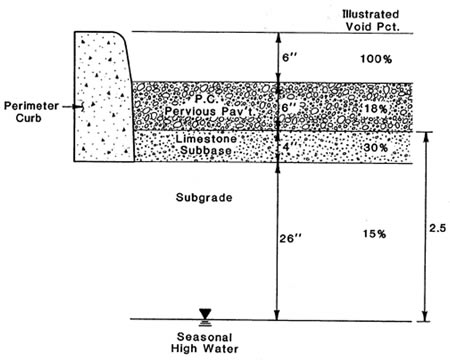Pervious concrete, a type of concrete without sand, can drain hundreds of inches of rain per hour, allowing water to filter into groundwater stores below, rather than run off into storm drains.
Paved surfaces are so ubiquitous in urban areas today that most of us give little thought to the impact they have on water quality and the health of the environment. But here’s the sobering reality: As more available land area in the country gets paved over, a larger amount of rainwater ends up falling on impervious surfaces such as parking lots, driveways, sidewalks, and streets rather than soaking into the soil. This creates an imbalance in the natural ecosystem and leads to a host of problems including erosion, flash floods, water table depletion, and pollution of rivers, lakes, and coastal waters as rainwater rushing across pavement surfaces picks up everything from oil and grease spills to deicing salts and chemical fertilizers.
A simple solution to avoiding these problems is to stop installing the impervious surfaces that block natural water infiltration into the soil. But few of us are ready to give up our paved roads, driveways, and parking lots. Rather than building them with conventional concrete or asphalt, more and more communities, municipalities, and businesses are switching to pervious concrete or porous pavement, a material that offers the inherent durability and low life-cycle costs of a typical concrete pavement while retaining stormwater runoff and replenishing local watershed systems.
Instead of preventing infiltration of water into the soil, pervious pavement assists the process by capturing rainwater in a network of voids and allowing it to percolate into the underlying soil. In many cases, pervious concrete roadways and parking lots can double as water retention structures, reducing or eliminating the need for traditional stormwater management systems such as retention ponds and sewer tie-ins.